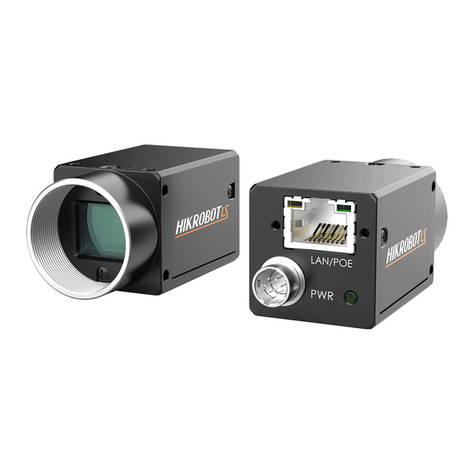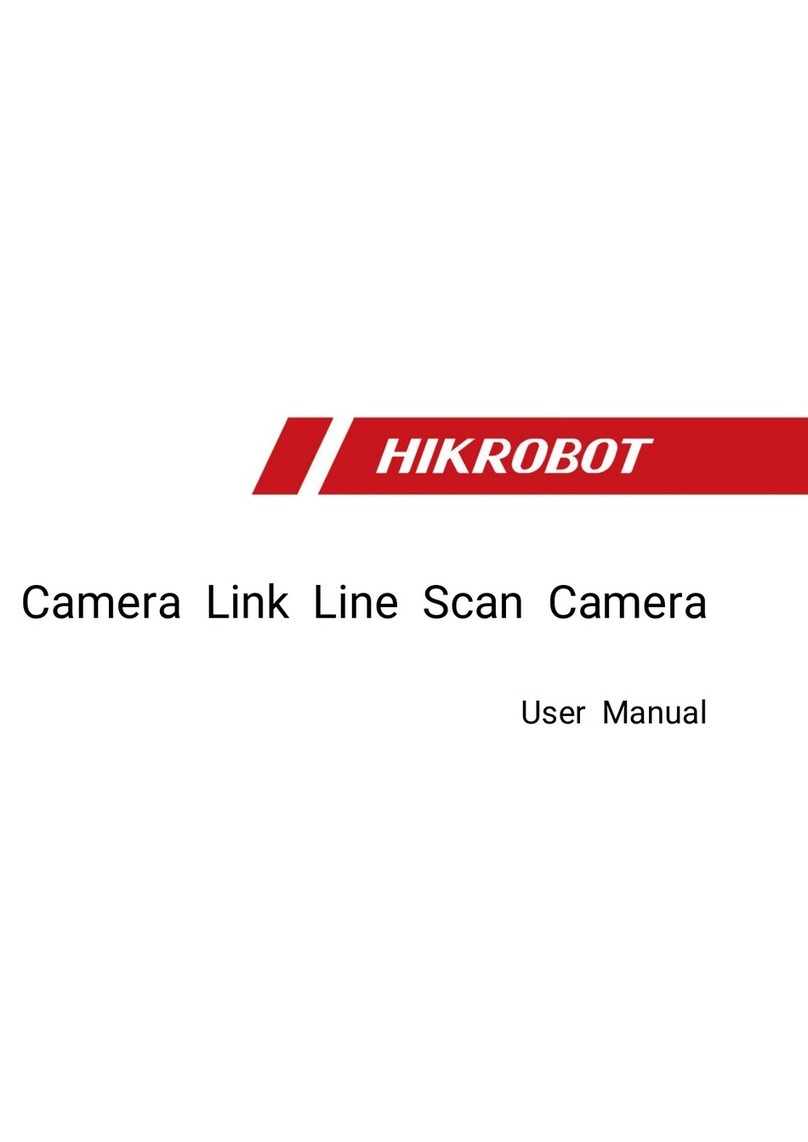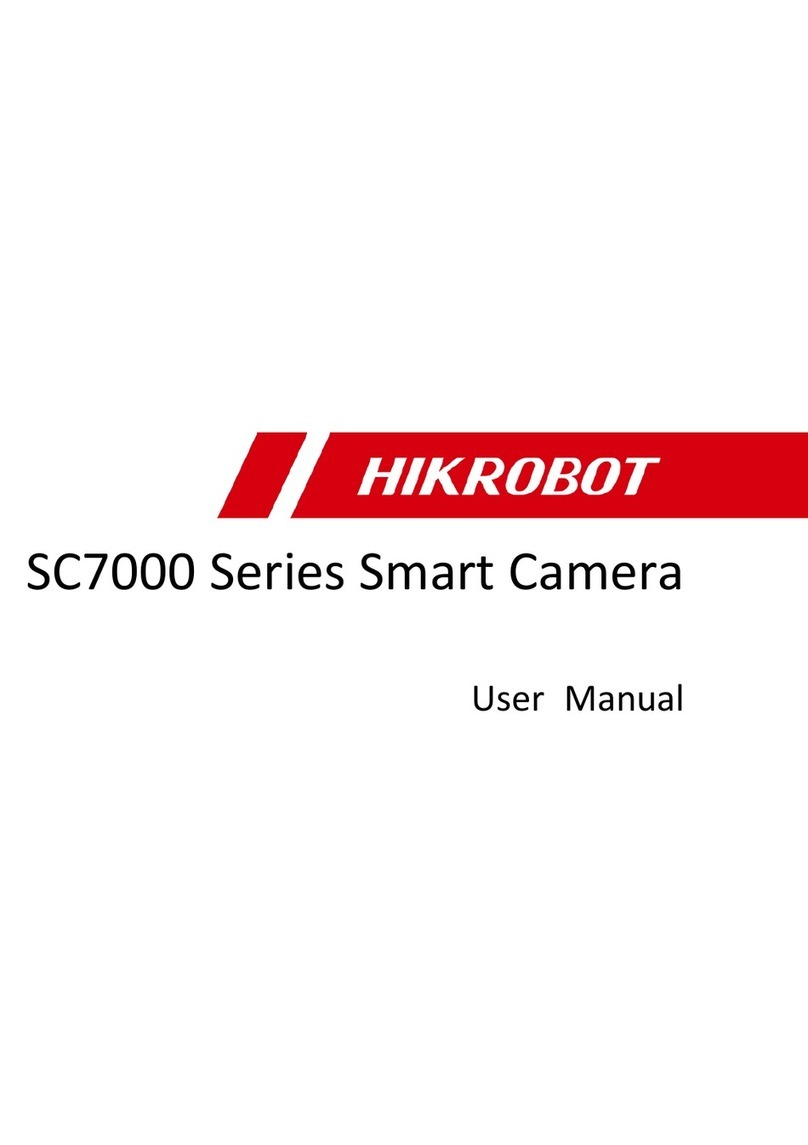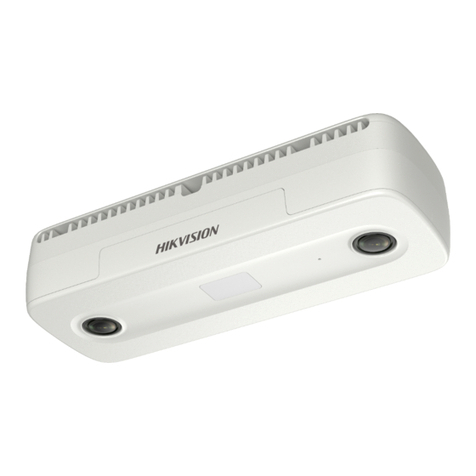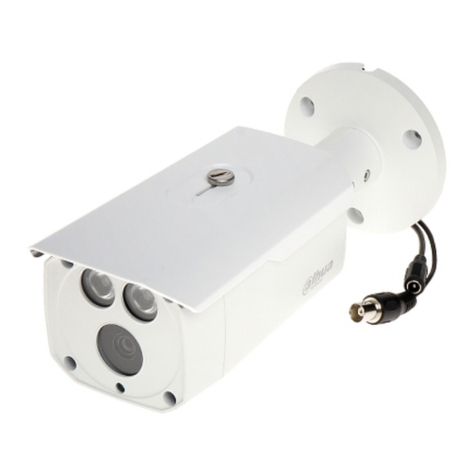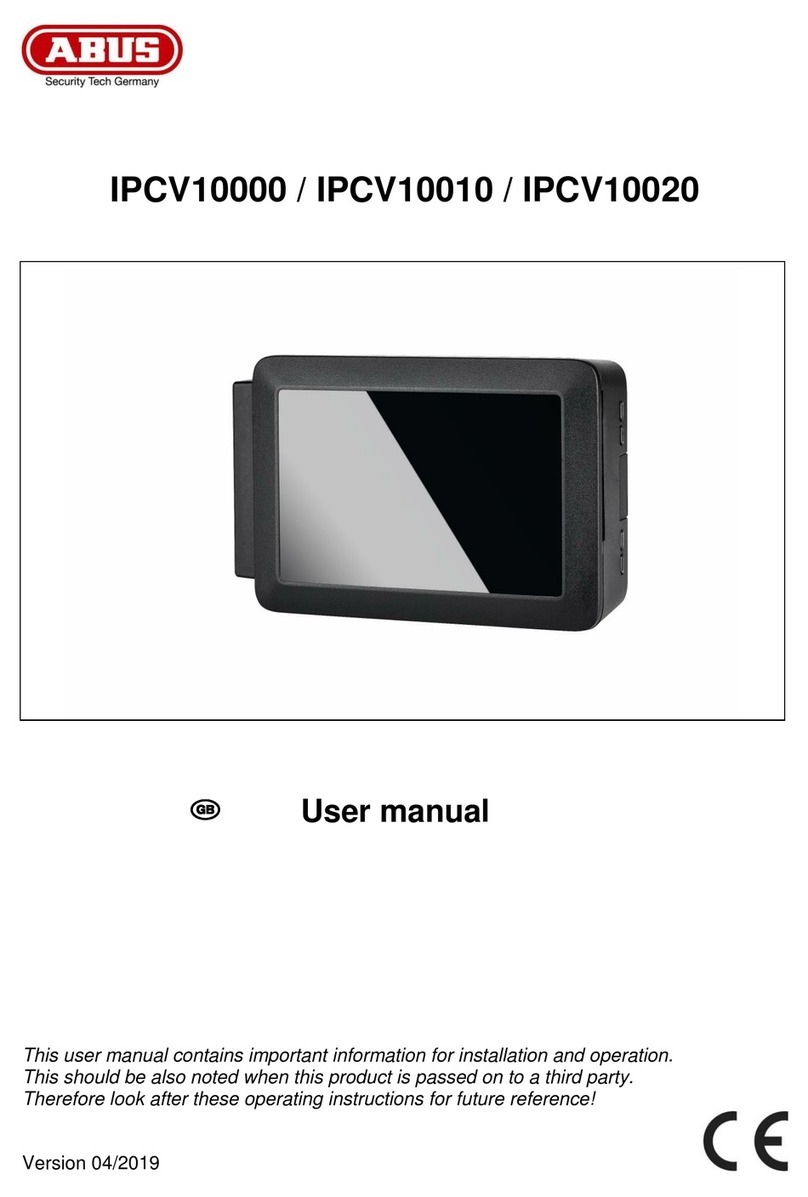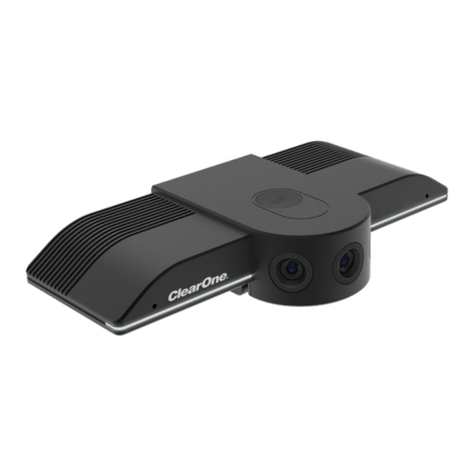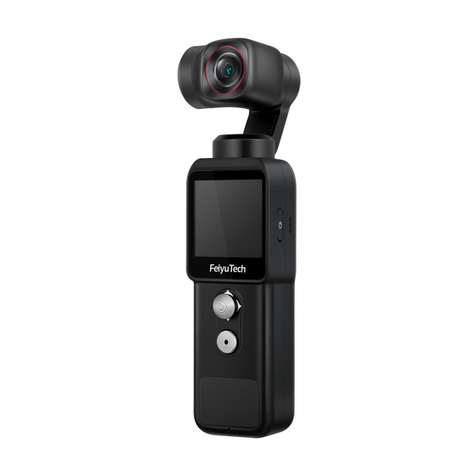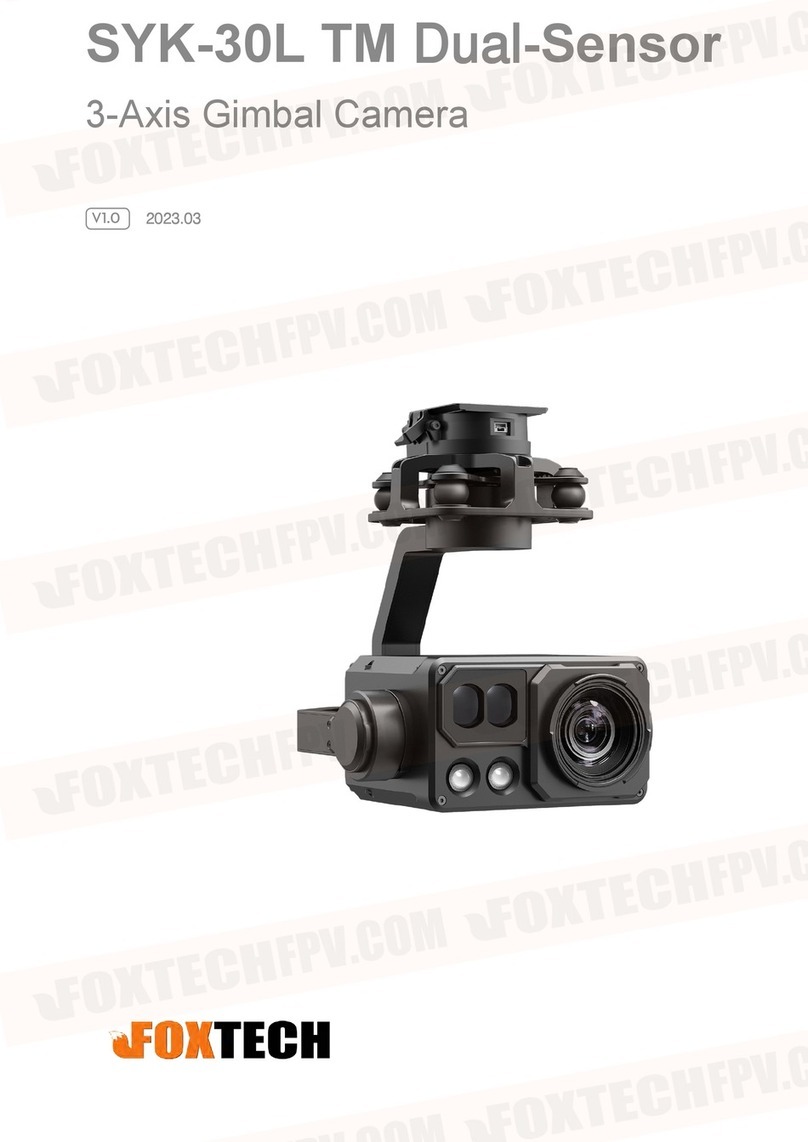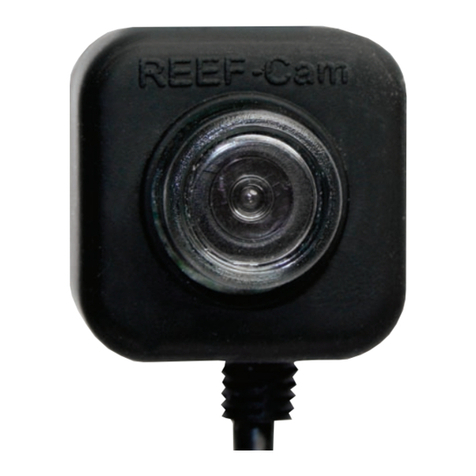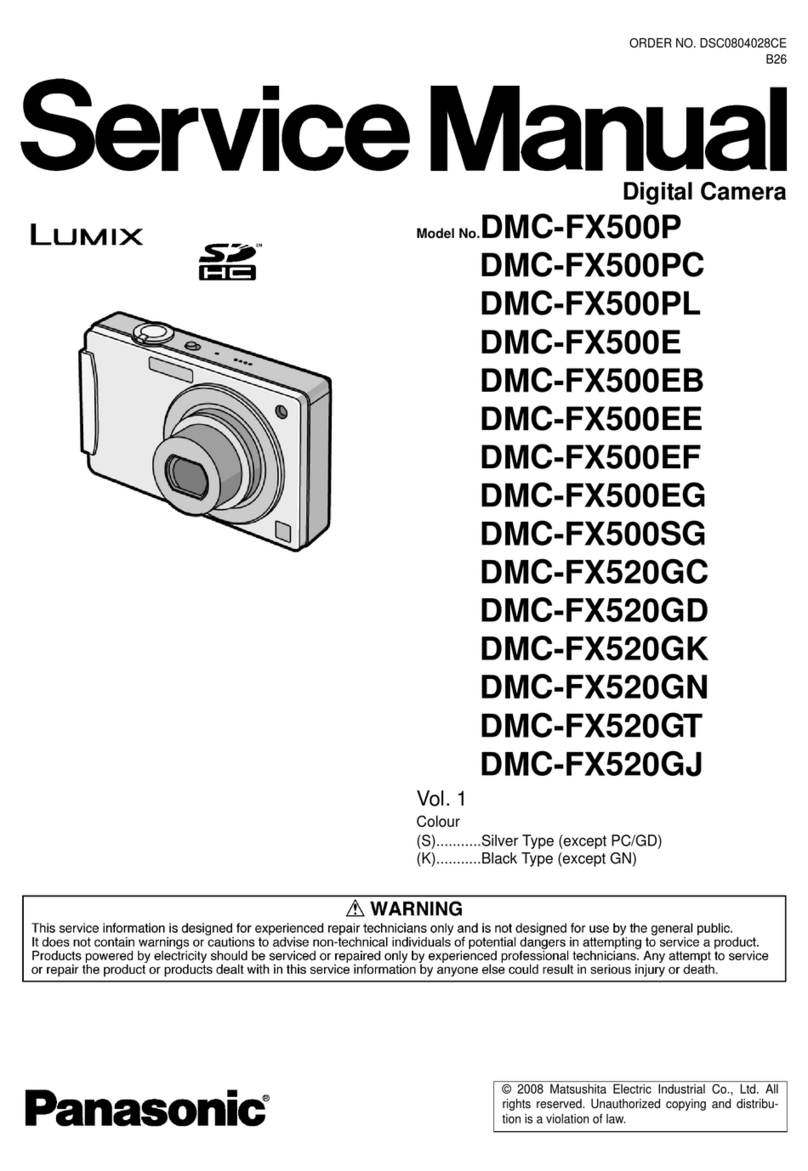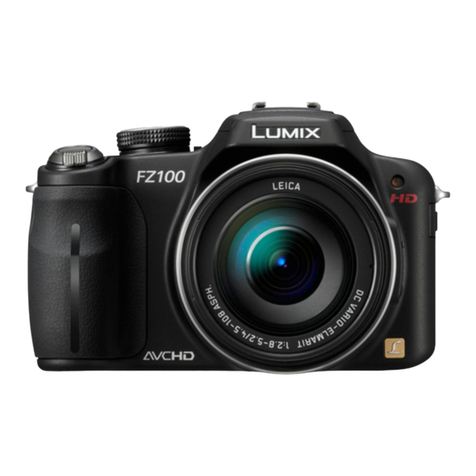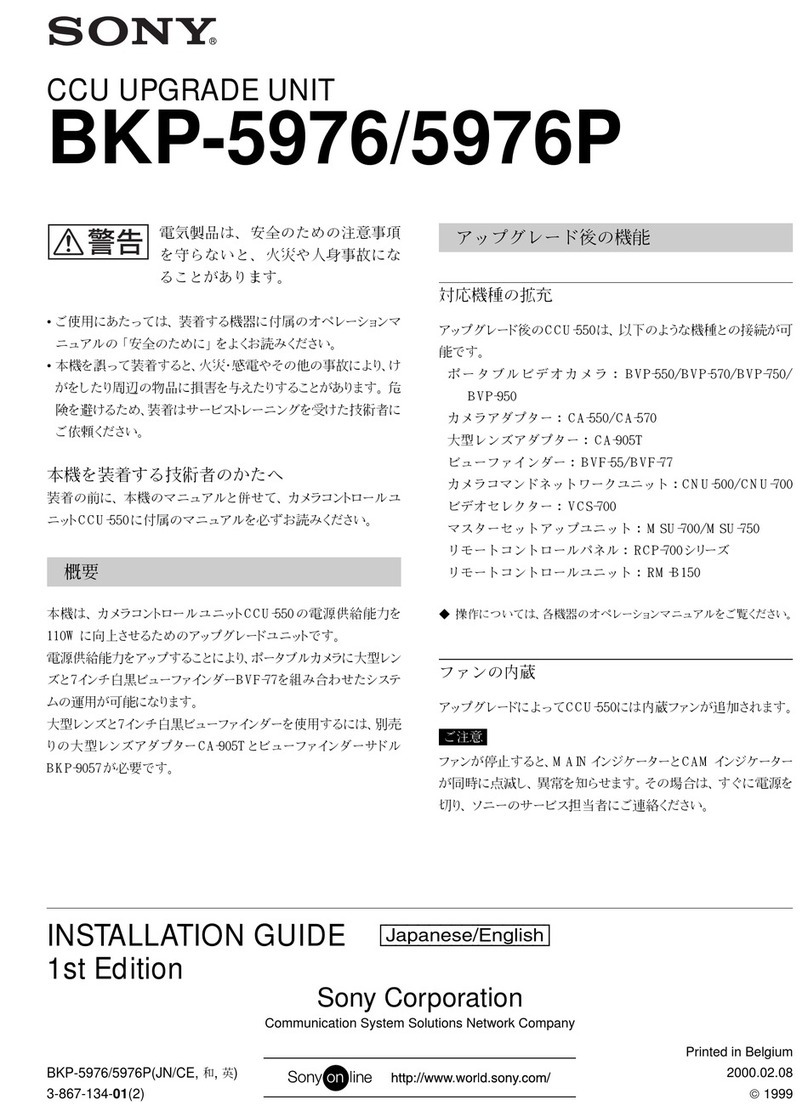HikRobot MV-CL021-40GM User manual

GigE Line Scan Camera
User Manual

GigE Line Scan Camera·User Manual
ii
Legal Information
© 2021 Hangzhou Hikrobot Technology Co., Ltd. All rights reserved.
About This Manual
The Manual includes instructions for using and managing the Product. Pictures, charts,
images and all other information hereinafter are for description and explanation only. The
information contained in the Manual is subject to change, without notice, due to firmware
updates or other reasons. Please find the latest version of this Manual at the Hikrobot
website (https://en.hikrobotics.com/). Please use this Manual with the guidance and
assistance of professionals trained in supporting the Product.
Trademarks
and other Hikrobot's trademarks and logos are the properties of Hikrobot in
various jurisdictions. Other trademarks and logos mentioned are the properties of their respective
owners.
Disclaimer
TO THE MAXIMUM EXTENT PERMITTED BY APPLICABLE LAW, THIS MANUAL AND THE PRODUCT
DESCRIBED, WITH ITS HARDWARE, SOFTWARE AND FIRMWARE, ARE PROVIDED "AS IS" AND "WITH
ALL FAULTS AND ERRORS". HIKROBOT MAKES NO WARRANTIES, EXPRESS OR IMPLIED, INCLUDING
WITHOUT LIMITATION, MERCHANTABILITY, SATISFACTORY QUALITY, OR FITNESS FOR A PARTICULAR
PURPOSE. THE USE OF THE PRODUCT BY YOU IS AT YOUR OWN RISK. IN NO EVENT WILL HIKROBOT
BE LIABLE TO YOU FOR ANY SPECIAL, CONSEQUENTIAL, INCIDENTAL, OR INDIRECT DAMAGES,
INCLUDING, AMONG OTHERS, DAMAGES FOR LOSS OF BUSINESS PROFITS, BUSINESS
INTERRUPTION, OR LOSS OF DATA, CORRUPTION OF SYSTEMS, OR LOSS OF DOCUMENTATION,
WHETHER BASED ON BREACH OF CONTRACT, TORT (INCLUDING NEGLIGENCE), PRODUCT LIABILITY,
OR OTHERWISE, IN CONNECTION WITH THE USE OF THE PRODUCT, EVEN IF HIKROBOT HAS BEEN
ADVISED OF THE POSSIBILITY OF SUCH DAMAGES OR LOSS.
YOU ACKNOWLEDGE THAT THE NATURE OF INTERNET PROVIDES FOR INHERENT SECURITY RISKS,
AND HIKROBOT SHALL NOT TAKE ANY RESPONSIBILITIES FOR ABNORMAL OPERATION, PRIVACY
LEAKAGE OR OTHER DAMAGES RESULTING FROM CYBER-ATTACK, HACKER ATTACK, VIRUS
INFECTION, OR OTHER INTERNET SECURITY RISKS; HOWEVER, HIKROBOT WILL PROVIDE TIMELY
TECHNICAL SUPPORT IF REQUIRED.
YOU AGREE TO USE THIS PRODUCT IN COMPLIANCE WITH ALL APPLICABLE LAWS, AND YOU ARE
SOLELY RESPONSIBLE FOR ENSURING THAT YOUR USE CONFORMS TO THE APPLICABLE LAW.
ESPECIALLY, YOU ARE RESPONSIBLE, FOR USING THIS PRODUCT IN A MANNER THAT DOES NOT
INFRINGE ON THE RIGHTS OF THIRD PARTIES, INCLUDING WITHOUT LIMITATION, RIGHTS OF
PUBLICITY, INTELLECTUAL PROPERTY RIGHTS, OR DATA PROTECTION AND OTHER PRIVACY RIGHTS.
YOU SHALL NOT USE THIS PRODUCT FOR ANY PROHIBITED END-USES, INCLUDING THE
DEVELOPMENT OR PRODUCTION OF WEAPONS OF MASS DESTRUCTION, THE DEVELOPMENT OR
PRODUCTION OF CHEMICAL OR BIOLOGICAL WEAPONS, ANY ACTIVITIES IN THE CONTEXT RELATED

GigE Line Scan Camera·User Manual
iii
TO ANY NUCLEAR EXPLOSIVE OR UNSAFE NUCLEAR FUEL-CYCLE, OR IN SUPPORT OF HUMAN
RIGHTS ABUSES.
THE PERFORMANCE DATA IN THIS PUBLICATION IS BASED ON HIKROBOT'S INTERNAL
RESEARCH/EVALUATION. ACTUAL DATA MAY VARY DEPENDING ON SPECIFIC CONFIGURATIONS
AND OPERATING CONDITIONS AND HIKROBOT SHALL NOT BEAR THE CONSEQUENCES ARISING
THEREFROM. IN THE EVENT OF ANY CONFLICTS BETWEEN THIS MANUAL AND THE APPLICABLE
LAW, THE LATER PREVAILS.
Regulatory Information
FCC Information
Please take attention that changes or modification not expressly approved by the party responsible
for compliance could void the user's authority to operate the equipment.
FCC compliance: This equipment has been tested and found to comply with the limits for a Class A
digital device, pursuant to part 15 of the FCC Rules. These limits are designed to provide
reasonable protection against harmful interference when the equipment is operated in a
commercial environment. This equipment generates, uses, and can radiate radio frequency energy
and, if not installed and used in accordance with the instruction manual, may cause harmful
interference to radio communications. Operation of this equipment in a residential area is likely to
cause harmful interference in which case the user will be required to correct the interference at his
own expense.
FCC Conditions
This device complies with part 15 of the FCC Rules. Operation is subject to the following two
conditions:
1. This device may not cause harmful interference.
2. This device must accept any interference received, including interference that may cause
undesired operation.
EU Conformity Statement
This product and - if applicable - the supplied accessories too are marked with "CE" and
comply therefore with the applicable harmonized European standards listed under the
EMC Directive 2014/30/EU, the LVD Directive 2014/35/EU, the RoHS Directive 2011/65/EU.
2012/19/EU (WEEE directive): Products marked with this symbol cannot be disposed of as
unsorted municipal waste in the European Union. For proper recycling, return this
product to your local supplier upon the purchase of equivalent new equipment, or

GigE Line Scan Camera·User Manual
iv
dispose of it at designated collection points. For more information see: www.recyclethis.info
2006/66/EC (battery directive): This product contains a battery that cannot be
disposed of as unsorted municipal waste in the European Union. See the product
documentation for specific battery information. The battery is marked with this
symbol, which may include lettering to indicate cadmium (Cd), lead (Pb), or mercury (Hg).
For proper recycling, return the battery to your supplier or to a designated collection point.
For more information see: www.recyclethis.info
Korea Certification
.
Symbol Convention
The symbols that may be found in this document are defined as follows.
Symbol
Description
Provides additional information to emphasize or supplement important
points of the main text.
Indicates a potentially hazardous situation, which if not avoided, could
result in equipment damage, data loss, performance degradation, or
unexpected results.
Indicates a hazard with a high level of risk, which if not avoided, will result
in death or serious injury.
Available Model
This manual is applicable to the GigE Line Scan Camera.
Safety Instructions
These instructions are intended to ensure that the user can use the device correctly to avoid
danger or property loss.
Laws and Regulations
The device should be used in compliance with local laws, electrical safety regulations, and fire
prevention regulations.
Power Supply
When wiring or dismounting, make sure that the device power is cut off, and do not operate

GigE Line Scan Camera·User Manual
v
under electrification.
Avoid contact with exposed circuit. When the device is powered on, avoid contact with
exposed junctions and parts.
Use the power adapter provided by the regular manufacturer.
Do not connect multiple devices to one power adapter, to avoid over-heating or fire hazards
caused by overload.
Make sure the plug is properly connected to the power socket.
Transportation
The device contains precision optical components and electronic components. During
transportation, storage and installation, incorrect operations like heavy pressure and violent
vibration should be avoided. Otherwise, the device may be damaged.
Avoid sudden collision, and pack the device with the accompanied carton and cushioning
material or similar package.
Using Environment
In order to reduce the risk of fire or electric shock, do not let the device get wet or damp.
Do not drop objects onto the device and avoid vigorous vibration.
Keep the device away from magnetic interference.
Do not use the device in extremely heat, extremely cold, dusty environment, corrosive
environment or high humidity environment.
Do not aim the device lens at objects of strong light, such as the sun and incandescent lamp.
Otherwise, the lens may be damaged.
The device should be stored in dry environment without corrosive gas. Avoid placing the
device in direct sunlight and poorly ventilated locations, or near heat sources such as heater or
heating (ignoring this warning may lead to fire hazards).
Do not operate in explosive environment.
Keep the surrounding area well ventilated to avoid heat accumulation. Do not contact the
radiator directly to avoid scald.
Electrostatic Protection
Remove all conductive objects (such as jewelry, watch, etc.) on the device body before
touching the device, and touch the grounding metal bracket by hand to release the static
electricity.
It is suggested to wear anti-static suit to prevent damage to the equipment caused by static
electricity.
When installing or maintaining the device, wear anti-static wristband or anti-static gloves.
Make sure that the wristband is tightly attached to the skin and is reliably grounded.
It is forbidden to touch exposed circuit boards with bare hands. Static electricity generated by
human body may damage electrostatic sensitive components on circuit boards.
When touching electrostatic sensitive components or devices, proper grounding measures
must be taken.
Put electrostatic sensitive components into anti-static bags for protection.
It is suggested to place humidifier in dry environment to maintain suitable humidity and
reduce static electricity generation.

GigE Line Scan Camera·User Manual
vi
Maintenance
If the device is not working properly, contact the store or the nearest service center. Do not
disassemble or modify the device in any way. (The company does not bear any liability for any
problem arising from unauthorized modification or maintenance).
Properly preserve all the original packaging materials of the device so that when problems
arise, the device can be packed with packaging materials and sent to the agent or returned to
the manufacturer for processing. The company does not bear any liability for accidental
damage during transportation caused by non-original packaging.
This device is a precision electronic device, no components can be maintained by user, do not
disassemble the device arbitrarily.
Cleaning
Do not touch the image sensor directly. If the sensor needs to be cleaned, use a clean rag and wet
it with alcohol, then gently wipe off the dirt; if the device is not in use, cover the image sensor with
dust cover for protection.
Installation
Do not install the device on vibrating surface or places that are vulnerable to impact.
Personnel Requirement
Quality requirements for installation and maintenance personnel: qualification certificate or
working experience in weak current system installation and maintenance, and relevant working
experience and qualifications. Besides, the personnel must possess the following knowledge and
operation skills:
The basic knowledge and operation skills of low voltage wiring and low voltage electronic
circuit connection.
The ability to comprehend the contents of this manual.
Contact Information
Hangzhou Hikrobot Technology Co., Ltd.
No. 399 Danfeng Road, Binjiang District, Hangzhou, 310051, China
E-mail: tech_support@hikrobotics.com
Website: https://en.hikrobotics.com/

GigE Line Scan Camera·User Manual
vii
Table of Contents
Chapter 1 Overview....................................................................................................................1
1.1 Introduction .......................................................................................................................1
1.2 Key Feature.........................................................................................................................1
Chapter 2 Appearance................................................................................................................2
Chapter 3 Interface and Indicator ...............................................................................................4
3.1 Power and I/O Interface.....................................................................................................4
3.1.1 First Type of Pin Definitions ......................................................................................4
3.1.2 Second Type of Pin Definitions..................................................................................5
3.2 Indicator .............................................................................................................................6
Chapter 4 Camera Installation ....................................................................................................7
4.1 Installation Preparation......................................................................................................7
4.2 Install Camera.....................................................................................................................7
Chapter 5 Camera Connection ....................................................................................................8
5.1 Install Client Software ........................................................................................................8
5.2 Turn off Firewall .................................................................................................................9
5.3 Set PC Network ................................................................................................................10
5.4 Set Camera Network ........................................................................................................11
5.5 Connect Camera to Client Software.................................................................................12
Chapter 6 Client Software Layout..............................................................................................13
Chapter 7 Image Acquisition.....................................................................................................16
7.1 Set Line Rate.....................................................................................................................16
7.2 Set Frame Timeout...........................................................................................................17
7.3 Set Acquisition Mode.......................................................................................................18
7.4 Set Trigger Mode..............................................................................................................19
7.5 Set Trigger Source ............................................................................................................20
7.5.1 Set Software Trigger................................................................................................21
7.5.2 Set Hardware Trigger...............................................................................................22
7.5.3 Set Shaft Encoder Control.......................................................................................23
7.5.4 Set Frequency Converter Control............................................................................26
7.5.5 View Trigger Line Rate ............................................................................................27
7.5.6 Set Action Command Trigger ..................................................................................28
7.5.7 Set Free Trigger .......................................................................................................30
7.6 Trigger Related Parameters..............................................................................................30

GigE Line Scan Camera·User Manual
viii
7.6.1 Acquisition Burst Frame Count ...............................................................................31
7.6.2 Trigger Activation ....................................................................................................32
7.6.3 Trigger Delay............................................................................................................34
7.6.4 Frame/Line Trigger Cache .......................................................................................35
7.6.5 Trigger Debouncer...................................................................................................37
Chapter 8 I/O Output ...............................................................................................................39
8.1 Select Output Signal.........................................................................................................39
8.2 Set Output Signal..............................................................................................................39
8.2.1 Enable Line Inverter ................................................................................................40
8.2.2 Enable Strobe Signal................................................................................................40
Chapter 9 I/O Electrical Feature and Wiring ..............................................................................45
9.1 I/O Introduction ...............................................................................................................45
9.2 I/O Electrical Feature........................................................................................................45
9.2.1 Differential Input Circuit..........................................................................................45
9.2.2 Differential Output Circuit.......................................................................................46
9.2.3 Bi-Direction I/O Circuit............................................................................................47
9.3 Input Wiring .....................................................................................................................49
9.3.1 First Type of Input Wiring .......................................................................................49
9.3.2 Seond Type of Input Wiring ....................................................................................52
9.4 Output Wiring ..................................................................................................................54
Chapter 10 Image Parameter ....................................................................................................56
10.1 Image Resolution............................................................................................................56
10.2 Set ROI............................................................................................................................56
10.3 Set Image Reverse..........................................................................................................57
10.4 Set Image Compression Mode .......................................................................................58
10.5 Set Pixel Format .............................................................................................................58
10.6 Set Test Pattern ..............................................................................................................60
10.7 Set Binning .....................................................................................................................62
10.8 Set Exposure Auto..........................................................................................................63
10.9 Set HDR ..........................................................................................................................64
10.10 Set Gain ........................................................................................................................64
10.10.1 Set Analog Gain...................................................................................................65
10.10.2 Set Digital Gain....................................................................................................66
10.11 Set Brightness...............................................................................................................67
10.12 Set Black Level..............................................................................................................67

GigE Line Scan Camera·User Manual
ix
10.13 Set White Balance........................................................................................................68
10.14 Set Gamma Correction.................................................................................................69
10.15 Set AOI..........................................................................................................................71
10.16 Set Color Transformation Control ................................................................................72
10.17 Set Hue.........................................................................................................................73
10.18 Set Saturation...............................................................................................................74
10.19 Set Color Adjustment ...................................................................................................75
10.20 Set LUT .........................................................................................................................76
10.21 Set Flat Field Correction...............................................................................................77
10.21.1 FPNC Correction..................................................................................................77
10.21.2 PRNUC Correction ...............................................................................................77
10.22 Set Space Correction....................................................................................................80
10.22.1 Set Line Rate Ratio ..............................................................................................81
10.22.2 Set Pixel Shift and Parallax Direction ..................................................................82
Chapter 11 Other Functions......................................................................................................84
11.1 Device Control................................................................................................................84
11.2 Embedded Information in Image ...................................................................................86
11.3 TDI Function ...................................................................................................................89
11.4 Scan Direction ................................................................................................................90
11.5 File Access Control .........................................................................................................91
11.6 Event Control..................................................................................................................93
11.7 Transport Layer Control..................................................................................................94
11.8 Transfer Control..............................................................................................................98
11.9 Save and Load User Set ..................................................................................................98
11.10 Set Multicast ..............................................................................................................100
11.11 Update Firmware .......................................................................................................102
Chapter 12 Troubleshooting ...................................................................................................104
Chapter 13 Revision History....................................................................................................105
Appendix A Camera Parameter Index......................................................................................107

GigE Line Scan Camera·User Manual
1
Chapter 1 Overview
1.1 Introduction
The GigE line scan camera uses the GigE interface to transmit images in real time, and it acquires
images and sets parameters via the client software or SDK. The camera is applicable to the printing,
textiles, railway, logistics, metallurgy, food, pharmaceutical manufacturing, material sorting, etc.
1.2 Key Feature
Supports auto and manual adjustment for gain, exposure time and white balance, manual
adjustment for Look-Up Table (LUT), Gamma correction, etc.
Adopts the image interpolation algorithm for the color reproduction.
Adopts GigE interface and max. transmission distance of 100 meters without relay.
Compatible with the GigE Vision Protocol, the GenlCam Standard, and the third-party
software based on the protocol and standard.
The camera functions may differ by camera models.
For specific camera functions, refer to the camera’s user manual.

GigE Line Scan Camera·User Manual
2
Chapter 2 Appearance
Appearances here are for reference only. Refer to the camera's specification for detailed dimension
information and corresponding models.
1
2 2 2
4
3
6
5
Figure 2-1 Appearance (Type I)
Figure 2-2 Appearance (Type II)
Figure 2-3 Appearance (Type III)

GigE Line Scan Camera·User Manual
3
Table 2-1 Component Description
No.
Name
Description
1
Lens Mount
It is used to install the lens.
2
Screw Hole
It is used to fix the camera to the installation position.
3
Screw Hole for GigE
Interface
It refers to the M2 screw hole for securing the network cable.
4
Gigabit Ethernet Interface
It refers to the Gigabit Ethernet interface for transmitting
data.
5
LED Indicator
It indicates the camera's status.
6
Power and I/O Interface
It provides power supply, input/output signal, serial port, etc.
Refer to the table below for the relation between camera model and camera appearance type.
Table 2-2 Camera Model and Appearance Type
Camera Model
Camera Appearance Type
MV-CL021-40GM
MV-CL022-40GC
MV-CL042-90GM/GC
Type I camera
MV-CL022-91GM/GC
MV-CL042-91GM/GC
Type II camera
MV-CL084-91GM
MV-CL086-91GC
Type III camera

GigE Line Scan Camera·User Manual
4
Chapter 3 Interface and Indicator
3.1 Power and I/O Interface
All GigE line scan cameras have the same 12-pin power and I/O interface, as shown below.
1
2
3
4
5
678
9
10
11
12
Figure 3-1 12-Pin Interface
But the specific pin definitions differ by camera models. Currently, two pin definitions are
available:
The first type of pin definitions is applicable to MV-CL021-40GM, MV-CL022-40GC, and
MV-CL042-90GM/GC.
The second type of pin definitions is applicable to other camera models.
3.1.1 First Type of Pin Definitions
Refer to the pin definitions and labels attached to the power and I/O cable to wire the device.
Table 3-1 Pin Definitions (First Type)
No.
Signal
I/O Signal Source
Description
1
GND
--
Power supply ground
2
DC_PWR
--
DC Power supply positive
3
IO_IN0_P
Line 0+
Differential input IO 0+
4
IO_IN0_N
Line 0-
Differential input IO 0-

GigE Line Scan Camera·User Manual
5
No.
Signal
I/O Signal Source
Description
5
GND
Line 2-
Power supply ground
6
IO_IN1_P
Line 3+
Differential input IO 1+
7
IO_IN1_N
Line 3-
Differential input IO 1-
8
IO2
Line 2+
Bi-directional IO
9
IO_OUT0_P
Line 1+
Differential output IO 0+
10
IO_OUT0_N
Line 1-
Differential output IO 0-
11
IO_OUT1_P
Line 4+
Differential output IO 1+
12
IO_OUT1_N
Line 4-
Differential output IO 1-
3.1.2 Second Type of Pin Definitions
Refer to the pin definitions and labels attached to the power and I/O cable to wire the device.
Table 3-2 Pin Definitions (Second Type)
No.
Signal
I/O Signal Source
Description
1
GND
--
Power supply ground
2
DC_PWR
--
DC power supply positive
3
LINE0_P
Line 0+
Differential input/output IO 0+
4
LINE0_N
Line 0-
Differential input/output IO 0-
5
GND
--
Power supply ground
6
LINE3_P
Line 3+
Differential input/output IO 3+
7
LINE3_N
Line 3-
Differential input/output IO 3-
8
LINE4_P
Line 4+
Differential input/output IO 4+

GigE Line Scan Camera·User Manual
6
No.
Signal
I/O Signal Source
Description
9
LINE1_P
Line 1+
Differential input/output IO 1+
10
LINE1_N
Line 1-
Differential input/output IO 1-
11
DC_PWR
--
DC power supply positive
12
LINE4_N
Line 4-
Differential input/output IO 4-
3.2 Indicator
The camera indicator is used to display camera status.
Table 3-3 Indicator Description
No.
Indicator Color
Status
Description
1
Red
Flashing very
slowly
Cable connection error occurs.
2
Red
Solid
Major error occurs.
3
Blue
Flashing slowly
The camera is acquiring images under trigger mode.
4
Blue
Flashing rapidly
The camera is acquiring images normally.
5
Blue
Solid
The camera is in idle status.
6
Red and blue
Flash
alternatively
The function of finding me is executed, or the firmware
is updating.
When the indicator is flashing rapidly, flashing slowly, or flashing very slowly, its unlit interval is
0.2 s, 1 s, 2 s respectively.
The indicator sometimes may show a purple color when red and blue colors flashing at the
same time.

GigE Line Scan Camera·User Manual
7
Chapter 4 Camera Installation
4.1 Installation Preparation
You need to prepare following accessories before installation.
Table 4-1 Accessories
No.
Name
Quantity
Description
1
Lens
1
You should purchase lens separately according to the camera’s lens
mount.
2
Lens Adapter
1
You should purchase lens adapter separately according to the
camera’s lens mount and lens you use.
3
Power and I/O Cable
1
It refers to the 12-pin power and I/O cable that you need to
purchase separately.
4
Power Adapter or
Switch Power Supply
1
You should select suitable power adapter or switch power supply
according to the camera power supply and consumption. You need
to purchase it separately.
5
Network Cable
1
The CAT-5e network cable or above. You need to purchase it
separately.
4.2 Install Camera
Before you start
Make sure all the related devices are powered off during the installation.
Steps:
1. Fix the camera to the installation position, and install lens and lens adapter to the camera.
2. Use a suitable network cable to connect the camera with a switch or a network interface card.
3. Select a power supply method.
● Direct supply: Use the 12-pin power and I/O cable to connect the camera to a power adapter.
● PoE (Power over Ethernet): For the camera that supports PoE, use a suitable network cable to
connect the camera to a switch that supports PoE or a network interface card.

GigE Line Scan Camera·User Manual
8
Chapter 5 Camera Connection
Camera connection to the client software is required for the camera’s configuration and remote
operations. This section introduces how to install the client software, set PC and camera network,
connect the camera to the client software, etc.
5.1 Install Client Software
MVS client software is used to connect the camera, set its parameters, etc.
The MVS client software is compatible with 32/64-bit Windows XP/7/10, 32/64-bit Linux, and
64-bit MacOS operating systems. Here we take Windows as an example.
The graphic user interface may differ by different versions of the client software you use.
You can download the MVS client software from https://en.hikrobotics.com/.
Steps:
1. Double click the MVS installation package.
2. Select the language.
3. Read and check Terms of the License Agreement.
Figure 5-1 Installation Interface
4. Click Start Setup.

GigE Line Scan Camera·User Manual
9
Figure 5-2 Default Settings
5. Keep default settings, and click Next.
6. Finish the installation according to the interface prompts.
5.2 Turn off Firewall
To ensure stable client running and image transmission, you are recommended turning off
Windows firewall before using the client software.
For different Windows versions, the path name or interface may differ.
Steps:
1. Go to Windows Firewall.
Windows XP system: Click Start > Control Panel > Security Center > Windows Firewall.
Windows 7 system: Click Start > Control Panel > Windows Firewall.
Windows 10 system: Click Start > Control Panel > System and Security > Windows Defender
Firewall.
2. Click Turn Windows Defender Firewall on or off on the left.
3. Select Turn off Windows Defender Firewall (not recommended).
Figure 5-3 Windows Defender Firewall
4. Click OK.

GigE Line Scan Camera·User Manual
10
5.3 Set PC Network
To ensure stable image transmission and normal communication between the PC and the camera
via client software, you need to set the PC network before using the client software.
For different Windows versions, the path name or interface may differ.
Steps:
1. Go to PC network settings page: Start > Control Panel > Network and Internet > Network and
Sharing Center > Change adapter settings.
2. Select NIC and set the IP obtainment mode.
Select Obtain an IP address automatically to get an IP address of the PC automatically.
Select Use the following IP address to set an IP address for the PC manually.
3. Set NIC property via the PC.
1) Go to NIC settings page: Control Panel > Hardware and Sound > Device Manager >
Network Adapter.
2) Select corresponding network interface card, and click Advanced.
3) Set Jumbo Packet value to 9014 Bytes, Transmit Buffers and Receive Buffers to 2048,
Interrupt Moderation Rate to Extremum.
4. (Optional) Set NIC property via the MVS.
1) Right click the Ethernet, and click NIC Settings.
Figure 5-4 NIC Settings
2) Enable Jumbo Frame, and set Receive Buffers and Transmit Buffers to 2048.

GigE Line Scan Camera·User Manual
11
Figure 5-5 NIC Configurator
The max. value of receive buffers and transmit buffers may differ by network interface cards.
5.4 Set Camera Network
You can set and operate the camera in the client software only when the camera is in the same
network segment with the PC where the client software is installed.
Steps:
1. Double click the client software to run it.
2. Click in device list to search the device.
3. Select a device to be connected.
4. Right click the device, and click Modify IP.
5. Set the IP address of the device in the same network segment with the PC
6. Click OK.
This manual suits for next models
9
Table of contents
Other HikRobot Digital Camera manuals
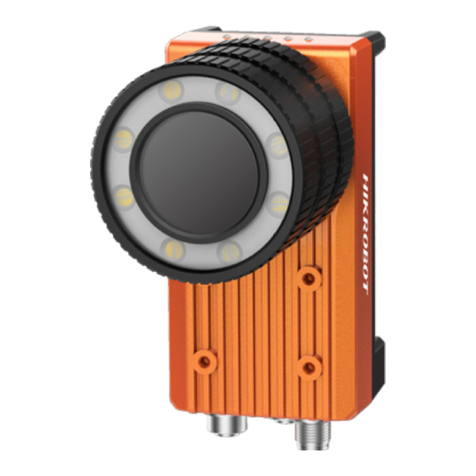
HikRobot
HikRobot X86 User manual
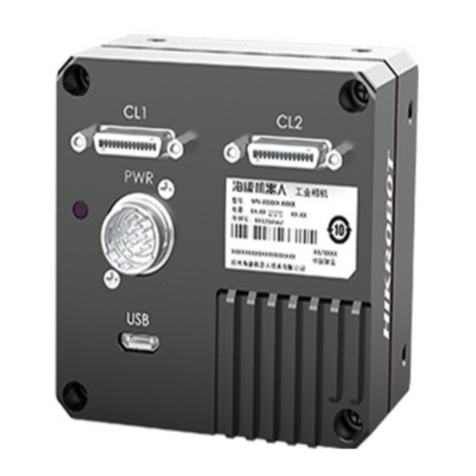
HikRobot
HikRobot MV-CL042-91CM User manual
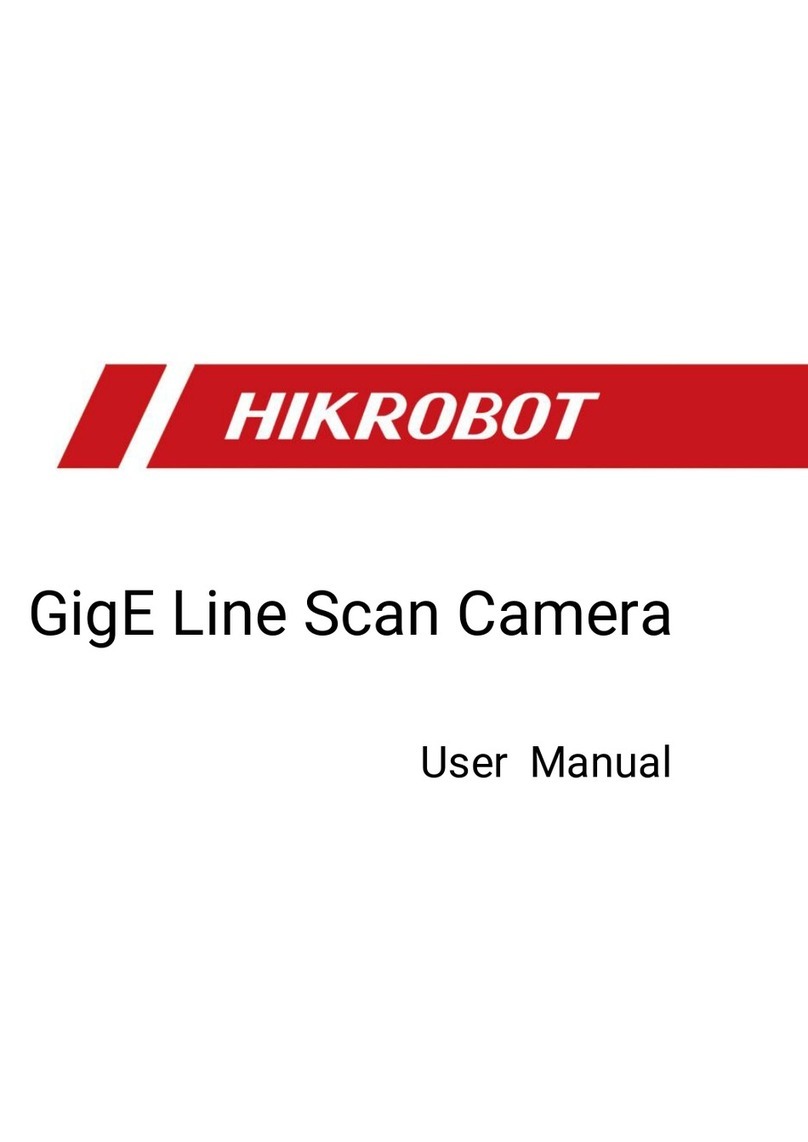
HikRobot
HikRobot GigE User manual
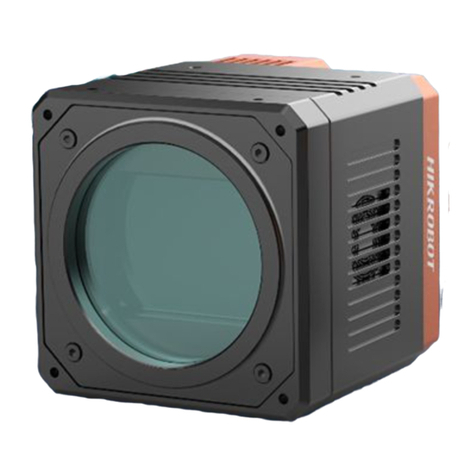
HikRobot
HikRobot CoaXPress User manual
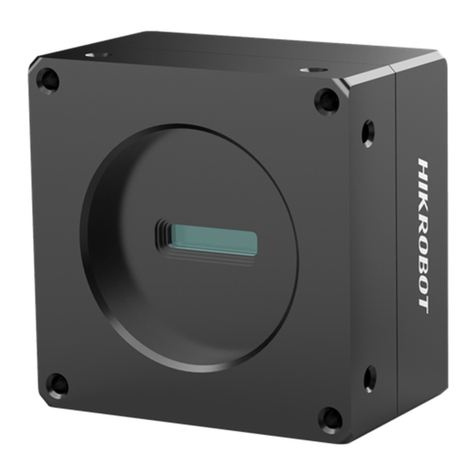
HikRobot
HikRobot CameraLink Area Scan Camera User manual
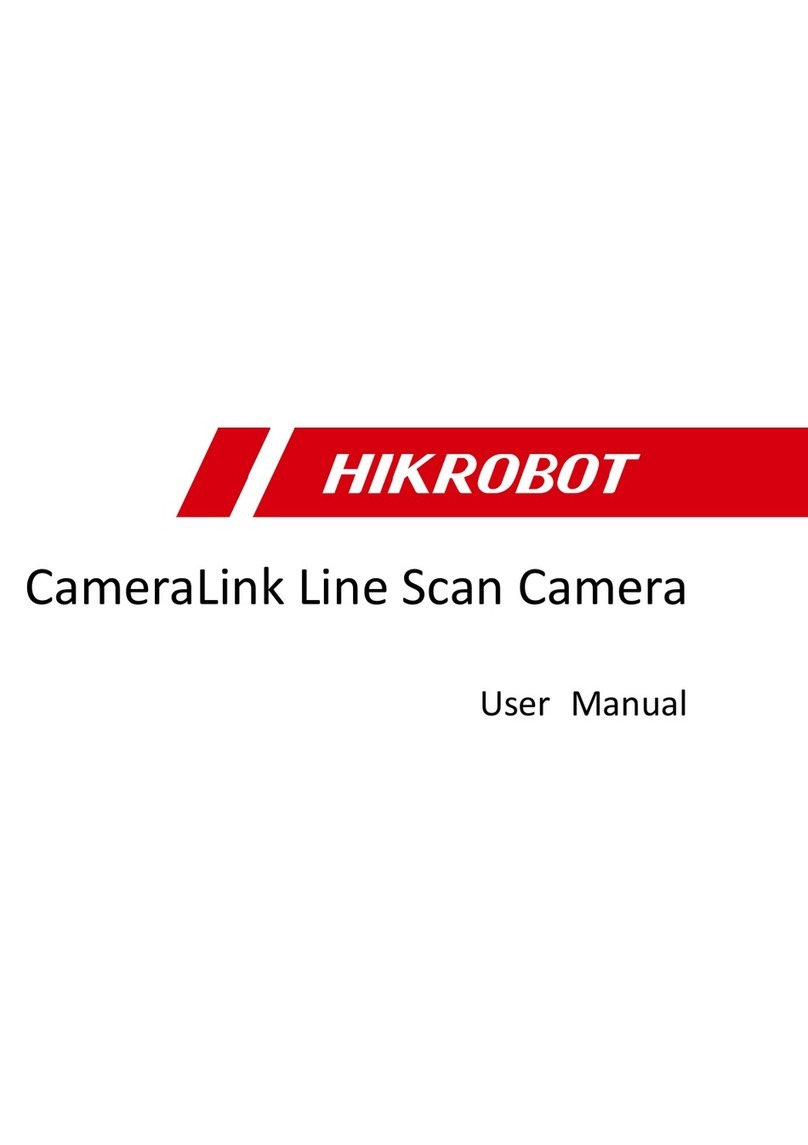
HikRobot
HikRobot CameraLink User manual
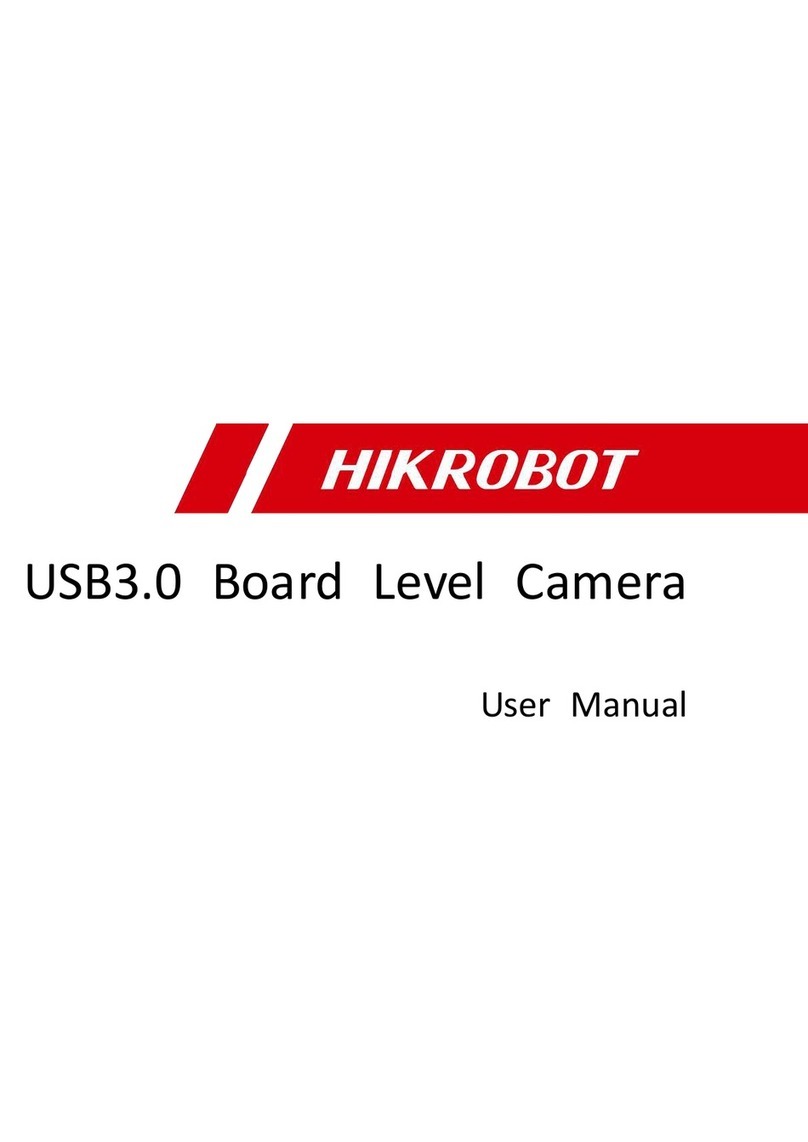
HikRobot
HikRobot USB3.0 User manual
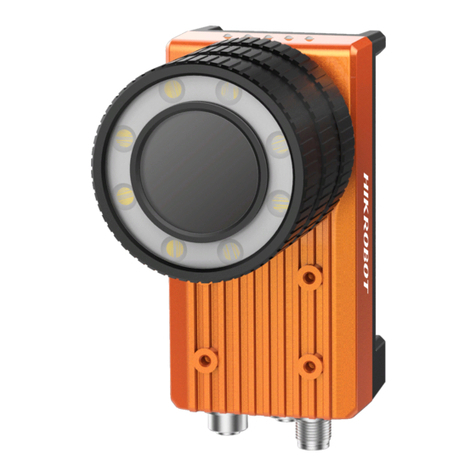
HikRobot
HikRobot X86 User manual

HikRobot
HikRobot CoaXPress User manual
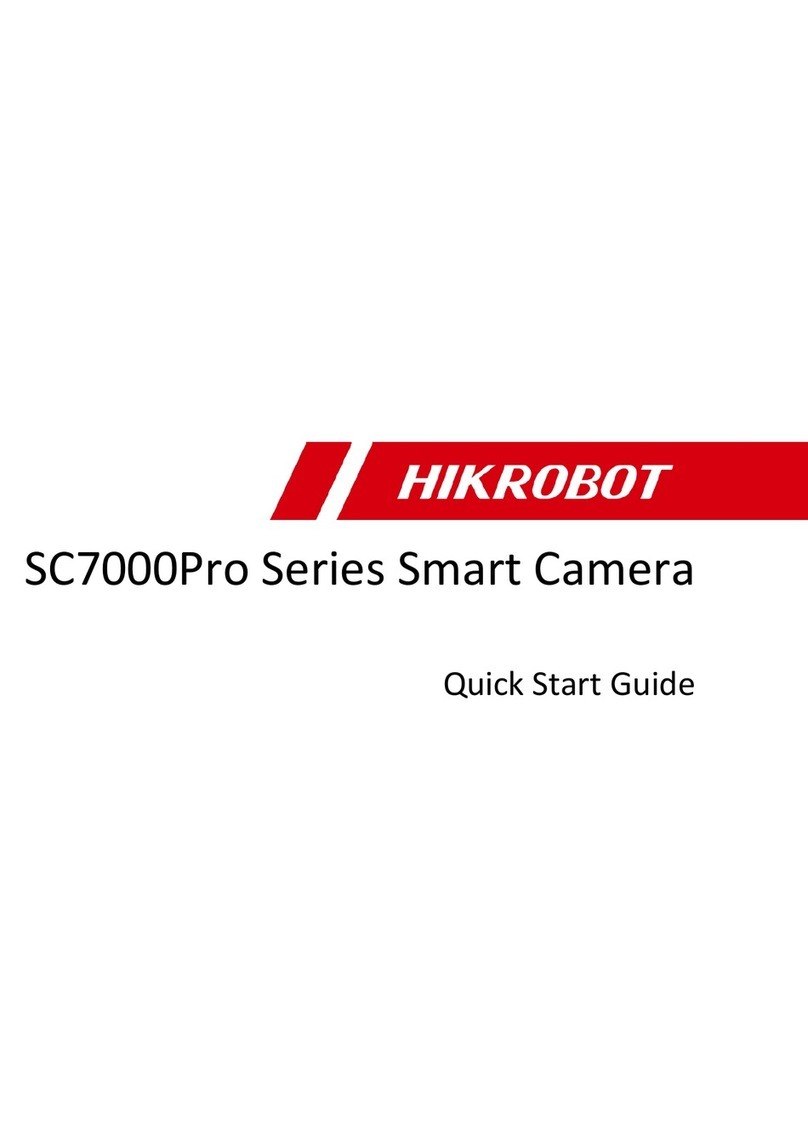
HikRobot
HikRobot SC7000Pro Series User manual
